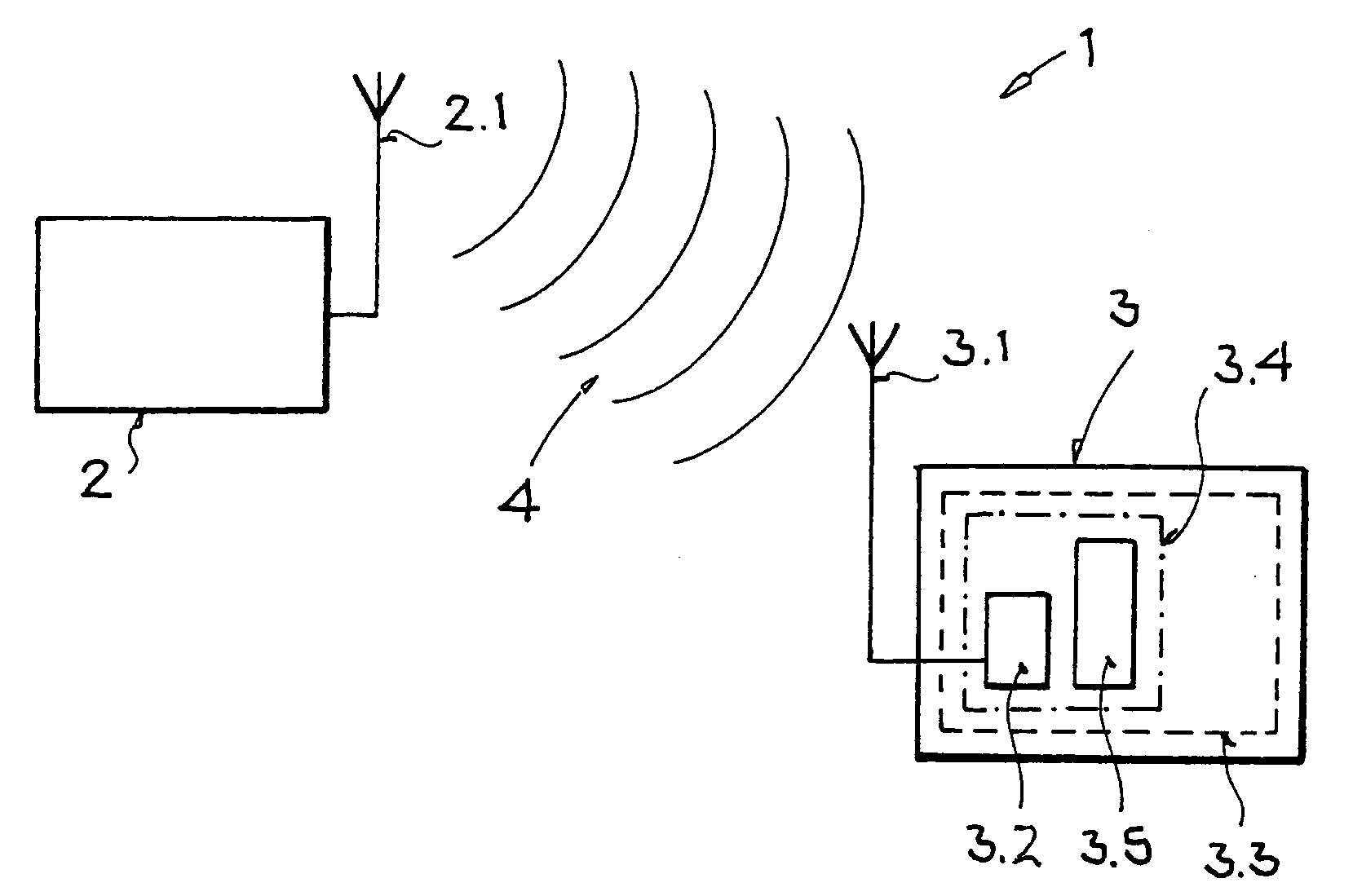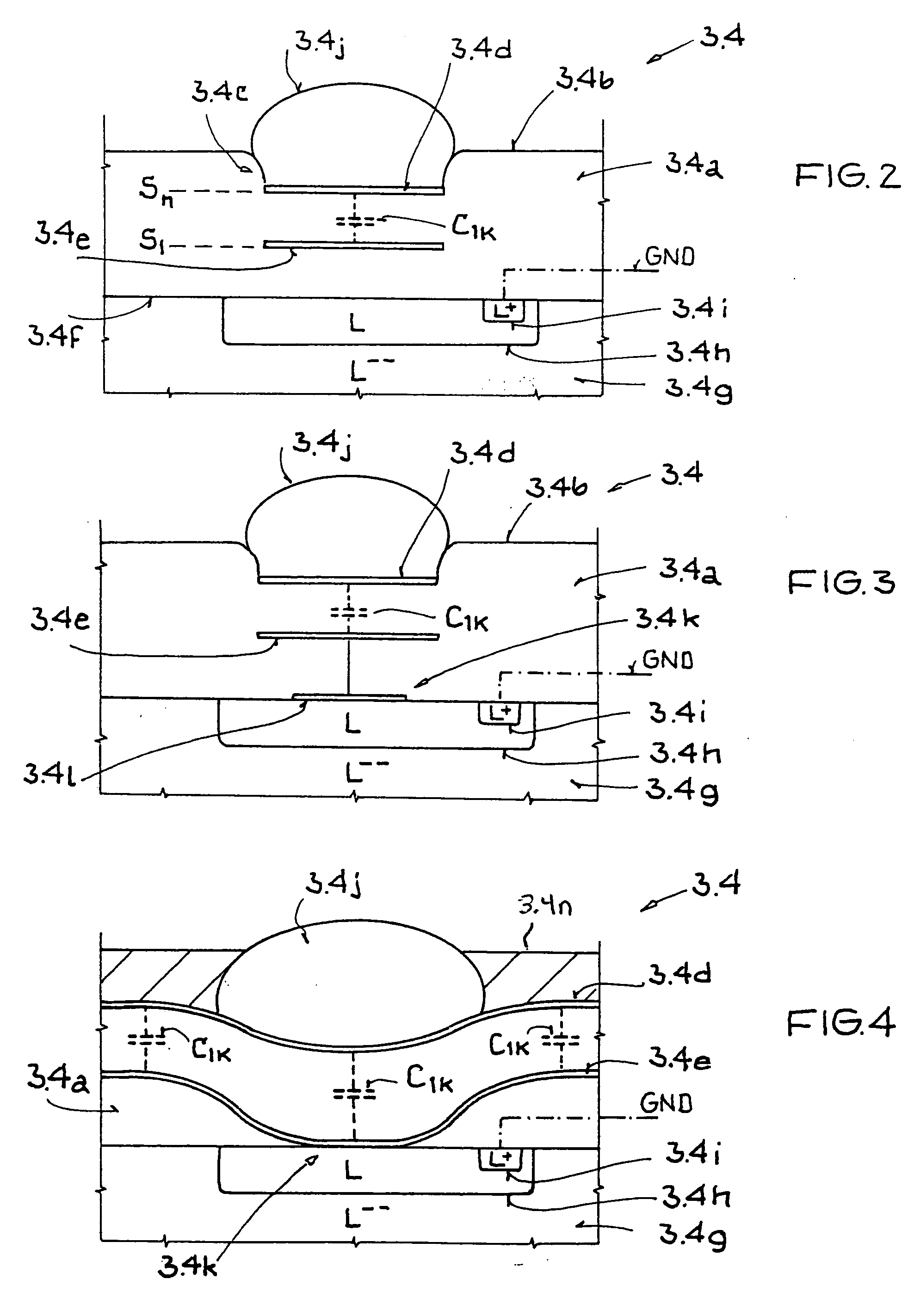Semiconductor structure
a technology of semiconductors and structures, applied in the direction of mechanical actuation of burglar alarms, semiconductor/solid-state device details, instruments, etc., can solve the problems of low quality factor parametrics, no longer have an effect, and approach can only be poorly implemented, so as to improve the quality
- Summary
- Abstract
- Description
- Claims
- Application Information
AI Technical Summary
Benefits of technology
Problems solved by technology
Method used
Image
Examples
Embodiment Construction
[0028]FIG. 1 shows a simplified, schematic representation of an RFID system 1 with a base station 2 and a passive transponder or remote sensor 3 that is supplied with electrical energy by an HF electromagnetic field 4 generated by the base station 2 and transmitted by a transmitting device 2.1 of the base station 2.
[0029] The transponder 3 has an appropriate receiving device 3.1, for example in the form of a dipole antenna, to receive electrical energy from the HF field 4, the receiving device standing in operative connection with an input pad 3.2 of an integrated circuit 3.3. The input pad 3.2 is part of an inventive semiconductor structure 3.4 which is described in detail below with the aid of FIGS. 2 through 4. In addition, the transponder IC 3.3 from FIG. 1 has a circuit 3.5 within the semiconductor structure 3.4 which can be an RSSI circuit or a rectifier circuit. The former is used to analyze (notch detection) an amplitude-modulated signal (AM signal), and the latter is used ...
PUM
 Login to View More
Login to View More Abstract
Description
Claims
Application Information
 Login to View More
Login to View More - R&D
- Intellectual Property
- Life Sciences
- Materials
- Tech Scout
- Unparalleled Data Quality
- Higher Quality Content
- 60% Fewer Hallucinations
Browse by: Latest US Patents, China's latest patents, Technical Efficacy Thesaurus, Application Domain, Technology Topic, Popular Technical Reports.
© 2025 PatSnap. All rights reserved.Legal|Privacy policy|Modern Slavery Act Transparency Statement|Sitemap|About US| Contact US: help@patsnap.com



